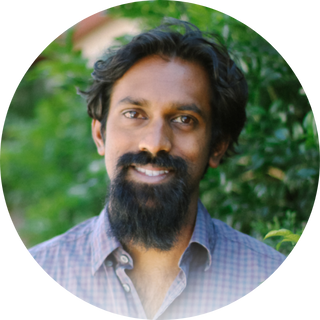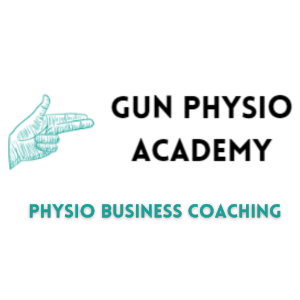What is DE&I?
Diversity, Equity, and Inclusion (DE&I) are interconnected concepts that are increasingly recognized as critical components of organisational culture, strategy, and success. Here’s a brief overview of each term:
- Diversity: Diversity refers to the presence of differences within a given setting. In the context of a workplace or team, this can include differences in race, ethnicity, gender, age, sexual orientation, physical abilities, religious beliefs, socioeconomic status, and more. It’s about recognising and valuing the unique characteristics and perspectives that individuals bring to the table.
- Equity: Equity is about ensuring fair treatment, opportunities, and advancement for all individuals while striving to identify and eliminate barriers that have prevented the full participation of some groups. It’s not just about treating everyone the same but about acknowledging and addressing historical and systemic inequalities to provide everyone with the resources they need to succeed.
- Inclusion: Inclusion involves creating an environment where all individuals feel valued, respected, and supported. It’s about actively inviting and embracing diversity and ensuring that everyone has the opportunity to fully participate and contribute. An inclusive culture empowers individuals to bring their whole selves to work, fostering a sense of belonging and collaboration.
Together, Diversity, Equity, and Inclusion (DE&I) aim to create a more dynamic, innovative, and equitable workplace where diverse perspectives are embraced, and everyone has the opportunity to thrive. In the context of your physiotherapy clinics, DE&I can enhance team dynamics, improve patient care, and contribute to a more inclusive and sustainable healthcare environment.

Personality
The personalities in the Gardenswartz & Rowe Model are based on the big 5 personalities:
- Openness: This trait reflects a person’s openness to new experiences, curiosity, and willingness to explore unfamiliar ideas, cultures, and creativity. Individuals high in openness tend to be imaginative, open-minded, and adventurous, while those low in openness may be more traditional, conventional, and resistant to change.
- Conscientiousness: Conscientiousness measures a person’s level of organisation, dependability, and attention to detail. Highly conscientious individuals are disciplined, responsible, and goal-oriented, often excelling in planning and execution. In contrast, those with lower conscientiousness might be more spontaneous, flexible, and less focused on structure.
- Extraversion: This trait gauges a person’s sociability, assertiveness, and tendency to seek out social interaction. Extraverts are typically energetic, outgoing, and thrive in social settings, while introverts (low in extraversion) may prefer solitude, quiet environments, and smaller, more intimate gatherings.
- Agreeableness: Agreeableness assesses a person’s level of compassion, cooperativeness, and friendliness. Individuals high in agreeableness are often empathetic, trusting, and helpful, prioritising harmony in their relationships. Those low in agreeableness may be more competitive, skeptical, and assertive in pursuing their own interests.
- Neuroticism: This trait measures emotional stability and the tendency to experience negative emotions like anxiety, depression, and anger. People high in neuroticism are more prone to stress and emotional volatility, while those low in neuroticism tend to be more emotionally resilient and stable.
Internal Dimensions
The internal dimensions based on the Gardenswartz & Rowe Model above are:
- Age: This refers to the diversity in the ages of individuals within a workplace or team. It acknowledges the different perspectives, skills, and experiences that people of various age groups bring to the organisation.
- Race: Race relates to the categorisation of people based on physical characteristics such as skin color, hair texture, and facial features. Racial diversity in the workplace involves recognising and valuing the contributions of individuals from different racial backgrounds.
- Ethnicity: Ethnicity pertains to the shared cultural heritage, language, history, and traditions of a group of people. Ethnic diversity in the workplace involves acknowledging and respecting the cultural differences and similarities among employees.
- Gender: Gender diversity refers to the inclusion of people of different genders, including male, female, and non-binary individuals. It recognises the importance of gender balance and equity in the workplace.
- Physical Ability: This dimension encompasses the diversity in physical abilities and disabilities among individuals. It involves creating an inclusive environment that accommodates the needs of people with varying levels of physical ability and ensuring equal opportunities for participation and success.
- Sexual Orientation: Sexual orientation diversity refers to the inclusion of individuals with different sexual orientations, such as heterosexual, homosexual, bisexual, and others. It involves creating a workplace where people feel safe and respected regardless of their sexual orientation.
External Dimensions
- Geographic Location: This refers to the diversity in the geographical origins and current locations of individuals. It includes considerations of urban vs. rural backgrounds, regional differences, and international backgrounds.
- Income: Income diversity relates to the variation in the economic backgrounds and current income levels of individuals. It acknowledges the impact of socioeconomic status on people’s experiences and opportunities.
- Personal Habits: This dimension encompasses the diversity in individual lifestyles, habits, and personal choices. It includes factors such as dietary preferences, exercise routines, and other personal practices.
- Recreational Habits: Recreational habits diversity refers to the variety of leisure activities and hobbies that individuals engage in. It recognizses the richness that different interests and pastimes bring to the workplace.
- Religion: Religion diversity involves the inclusion of individuals with different religious beliefs and practices. It acknowledges the importance of respecting and accommodating various faiths and spiritual practices.
- Educational Background: This dimension covers the diversity in the formal education and training that individuals have received. It includes variations in the level of education, fields of study, and educational institutions attended.
- Work Experience: Work experience diversity refers to the variety of professional backgrounds and career paths that individuals bring to the organisation. It values the different skills, knowledge, and perspectives gained through diverse work experiences.
- Appearance: Appearance diversity encompasses the diversity in physical appearance, including factors such as clothing style, body art, and personal grooming. It recognises the importance of respecting individual expression while maintaining professional standards.
- Parental Status: This dimension relates to the diversity in family structures and roles, including being a parent, caregiver, or guardian. It acknowledges the impact of family responsibilities on individuals’ lives and work.
- Marital Status: Marital status diversity refers to the inclusion of individuals with different marital statuses, such as single, married, divorced, or widowed. It recognises the impact of marital status on people’s experiences and needs.
Organisational Dimensions
- Functional Level/Classification: This refers to the diversity in job functions, roles, and levels within an organisation. It includes the hierarchy of positions, from entry-level to executive, and the variety of job classifications, such as technical, administrative, or managerial.
- Work Content/Field: Work content or field diversity relates to the diversity in the types of work and areas of expertise within an organisation. It encompasses the range of specialties, such as finance, marketing, research, or operations.
- Division/Department/Unit/Group: This dimension covers the diversity in the organisational structure, including the different divisions, departments, units, or groups within a company. It acknowledges the unique cultures and dynamics that can exist within various segments of an organization.
- Seniority: Seniority diversity refers to the variation in the length of service or tenure of employees within an organization. It includes the mix of new hires, mid-career employees, and long-term veterans.
- Work Location: Work location diversity encompasses the diversity in the physical locations where employees work, including different office sites, remote work, or fieldwork. It recognizes the impact of location on work experiences and interactions.
- Union Affiliation: This dimension relates to the diversity in union membership and representation within an organization. It includes the presence of unionized and non-unionized employees and the variety of unions represented.
- Management Status: Management status diversity refers to the inclusion of individuals with different levels of management responsibility, from non-supervisory employees to top executives. It acknowledges the diverse perspectives and challenges associated with various management roles.




